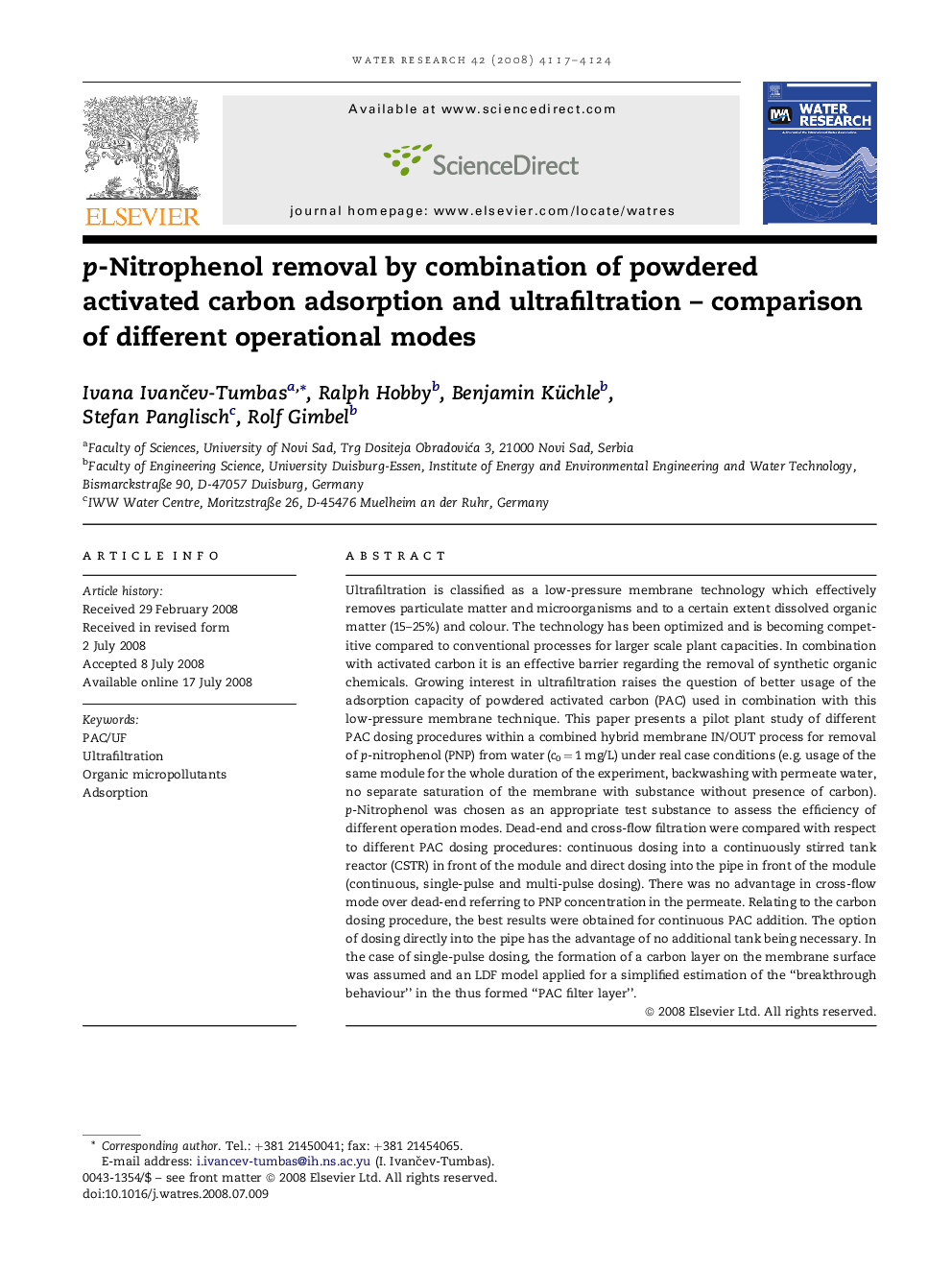| کد مقاله | کد نشریه | سال انتشار | مقاله انگلیسی | نسخه تمام متن |
|---|---|---|---|---|
| 4484810 | 1316932 | 2008 | 8 صفحه PDF | دانلود رایگان |

Ultrafiltration is classified as a low-pressure membrane technology which effectively removes particulate matter and microorganisms and to a certain extent dissolved organic matter (15–25%) and colour. The technology has been optimized and is becoming competitive compared to conventional processes for larger scale plant capacities. In combination with activated carbon it is an effective barrier regarding the removal of synthetic organic chemicals. Growing interest in ultrafiltration raises the question of better usage of the adsorption capacity of powdered activated carbon (PAC) used in combination with this low-pressure membrane technique. This paper presents a pilot plant study of different PAC dosing procedures within a combined hybrid membrane IN/OUT process for removal of p-nitrophenol (PNP) from water (c0 = 1 mg/L) under real case conditions (e.g. usage of the same module for the whole duration of the experiment, backwashing with permeate water, no separate saturation of the membrane with substance without presence of carbon). p-Nitrophenol was chosen as an appropriate test substance to assess the efficiency of different operation modes. Dead-end and cross-flow filtration were compared with respect to different PAC dosing procedures: continuous dosing into a continuously stirred tank reactor (CSTR) in front of the module and direct dosing into the pipe in front of the module (continuous, single-pulse and multi-pulse dosing). There was no advantage in cross-flow mode over dead-end referring to PNP concentration in the permeate. Relating to the carbon dosing procedure, the best results were obtained for continuous PAC addition. The option of dosing directly into the pipe has the advantage of no additional tank being necessary. In the case of single-pulse dosing, the formation of a carbon layer on the membrane surface was assumed and an LDF model applied for a simplified estimation of the “breakthrough behaviour” in the thus formed “PAC filter layer”.
Journal: Water Research - Volume 42, Issue 15, September 2008, Pages 4117–4124